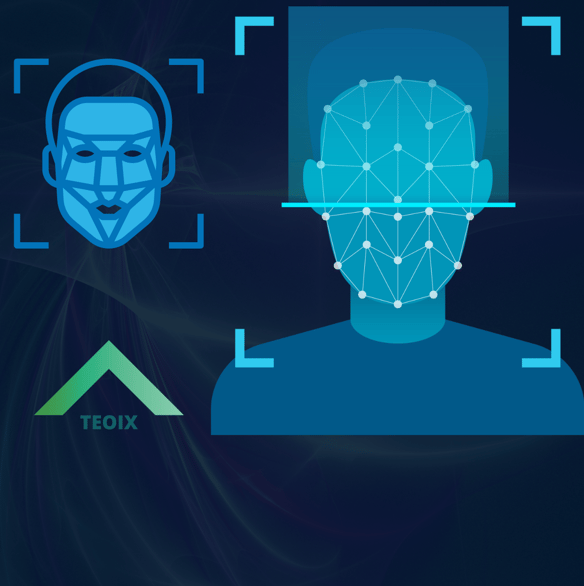Facial Recognition in AI: A Revolution with Risks
ARTIFICIAL INTELLIGENCE
6/15/20244 min read


Artificial intelligence (AI) subset facial recognition technology has grown rapidly in the last several years, revolutionizing everything from social networking to security. It is a system that uses deep learning and machine learning to find patterns in faces and can identify or authenticate people based just on their facial traits. Although facial recognition has many advantages, there are serious privacy and ethical issues as well. This article examines the principles, uses, developments, and controversy surrounding AI facial recognition.
The Mechanics of Facial Recognition
Facial recognition technology operates through several stages:
Detection:
First, the technology looks for faces in pictures or videos. This entails locating the face area and separating it from the surrounding environment.
Alignment:
After the face is identified, the system centers and rotates it to a standard orientation in order to align it for consistent placing.
Feature Extraction:
Next, the algorithm pulls distinguishing elements from the face, like the lips' contour, the nose's shape, and the space between the eyes.
Matching:
To locate a match, these features are matched to a database of previously stored faces. Deep learning models, in particular convolutional neural networks (CNNs), are used by modern systems to effectively accomplish these tasks.
Recognition/Verification:
Lastly, the system does one of two tasks: it either recognizes the user or confirms that they are who they say they are (verification).
Applications Across Industries
Facial recognition is becoming pervasive across various industries:
Security and Surveillance:
Facial recognition technology is used by both public and private sectors to monitor and identify people in airports, public areas, and border control. It improves security by promptly recognizing suspicious or known criminals.
Consumer electronics and cellphones:
Facial recognition technology is used by devices such as smartphones for authentication and unlocking, providing a safe and practical substitute for passwords and fingerprints.
Retail and Marketing:
Retailers use facial recognition to track customer activity, personalize customer experiences, and even identify known shoplifters for security reasons.
Healthcare:
By helping with patient identification, facial recognition software lowers treatment errors and streamlines administrative procedures.
Social Media and Entertainment:
Facial recognition technology is used by Facebook and Google Photos to tag images and arrange albums, improving user experience.
Advancements and Innovations
Advancements in AI have significantly improved the accuracy and capabilities of facial recognition:
Neural networks and deep learning:
These technologies help systems identify complex patterns in facial features, enhancing recognition precision even in the presence of changes in illumination, perspective, and expressions.
Real-time Recognition:
Real-time face recognition is now feasible because to the power of GPUs and edge computing, enabling immediate identification in dynamic contexts.
3D Facial Recognition:
This new technology uses three dimensions to capture facial traits. By evaluating depth and contours, it can recognize faces more accurately and is less affected by changes in stance and lighting.
Emotion Recognition:
With applications in customer service, mental health, and marketing, certain sophisticated computers are able to identify emotions from facial expressions.
Ethical and Privacy Concerns
Despite its potential, facial recognition technology raises significant ethical and privacy issues:
Privacy Invasion:
People's right to privacy is threatened by the ability to identify them in public without their permission. The widespread application of facial recognition technology may result in a society where people are tracked and monitored all the time.
Discrimination and Bias:
Research have revealed that facial recognition software is susceptible to bias, especially when it comes to the treatment of women and people of color. These prejudices have the potential to perpetuate social injustices and cause incorrect identifications
Misuse of monitoring:
Facial recognition technology may be abused by governments and other groups for the purpose of mass monitoring, which could result in abuses of authority and the repression of opposition.
Data Security:
There are serious security dangers associated with processing and storing facial recognition data. Identity theft and other nefarious acts could result from unauthorized access to such sensitive data.
Regulatory and Legal Landscape
Given the rapid adoption and the associated risks, the regulatory and legal landscape for facial recognition is evolving:
Laws and Prohibitions:
A number of states have passed laws prohibiting the use of facial recognition technology or have put out similar legislation. Citing privacy and civil rights issues, for instance, cities like San Francisco and Boston have prohibited its usage by municipal agencies.
Standards and Compliance:
To guarantee the moral application of facial recognition technology, governments and organizations are developing standards and compliance frameworks. This covers policies for openness, data security, and consent.
International Views:
Different nations have varied degrees of control and regulation when it comes to facial recognition technology. For example, while nations such as China have welcomed the widespread use of AI, the European Union is exploring stringent limitations under the planned AI Act.
The Future of Facial Recognition
Face recognition technology is expected to continue developing in the future due to advances in artificial intelligence and rising consumer demand for convenience and security. But how society responds to the ethical, privacy, and regulatory issues it raises will have a big impact on how it develops.
Conclusion
Artificial intelligence's use of facial recognition has two drawbacks. Although technology provides unmatched security and simplicity for a wide range of applications, there are significant hazards to human freedom, equality, and privacy. Maintaining a balance between innovation and ethical issues will become increasingly important as this technology develops. Together, governments, businesses, and the general public must negotiate this terrain in order to maximize the advantages of facial recognition technology while minimizing any possible drawbacks.
We can make sure that facial recognition technology is created and used in ways that respect individual rights and advance the common good by being aware of and responding to these issues.
In conclusion, facial recognition technology is an effective tool that has the potential to revolutionize a number of industries, but its ethical implications must be carefully considered. The path forward calls for striking a balance between innovation and observance of human rights and privacy.


